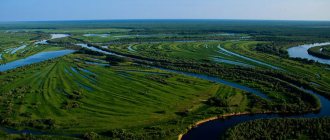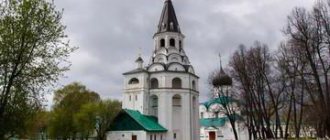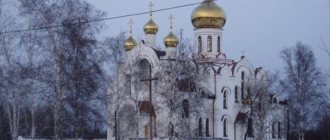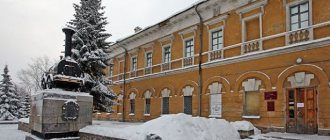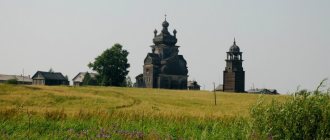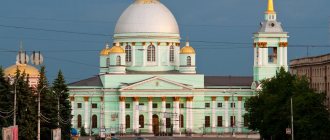Enterprises and organizations
As of July 1, 2021, almost 29 thousand legal entities and 20 thousand individual entrepreneurs were registered in Barnaul. The average number of employees employed in large and medium-sized organizations in January-June 2021 was 157 thousand people.
More than 41 thousand people work in the Oktyabrsky district, which is 26% of the total number of city employees. This is followed by Central (25%), Zheleznodorozhny (19%), Industrial (18%), Leninsky (12%) districts.
In first place in terms of the number of employees are healthcare organizations and the provision of social services (17% of the total number of employees). In second place are organizations of manufacturing industries (16%). Slightly fewer Barnaul residents are employed in education (15%) and in public administration (14%).
The average monthly salary in large and medium-sized organizations per employee for January-June 2021 amounted to 39.2 thousand rubles, which is 8.1% more than in the same period of the previous year.
Tourism and sports in Altai
The nature surrounding Barnaul contributes to the development of active recreation associated with cross-country skiing in the winter and long walks over rough terrain in the summer. The demand for active pastime prompted one of the Barnaul companies to build a special track in Ribbon Bor. The length of the route is twenty-five kilometers, and it is designed in such a way that all athletes feel comfortable and safe when skiing. It starts at the Dynamo stadium and ends there.
Barnaul, where the Health Track is located, has thus become one of several cities where new trails and tracks have been built for runners and skiers. However, it is not only skiing that attracts travelers and sports tourism enthusiasts to Altai.
Development
Modern Barnaul is developing rapidly. Public gardens, the Ob embankment, and pedestrian zones are being developed. Housing construction is actively underway. During January-June 2021, 3,043 new apartments with an average area of 58 m2 were built in Barnaul. Developers have introduced 177 thousand m2 of total area of residential buildings (including houses built by the population on land plots intended for gardening).
The construction of neighborhoods with shopping centers, equipped with playgrounds, schools, and kindergartens has become the norm. In the first half of 2021, 280 new places for kindergarten students were introduced.
Cause and history
The founder of the city is considered to be the Siberian industrialist Akinfiy Demidov. He chose the place where the Barnaulka River flows into the Ob for the construction of a copper smelter. In honor of this influx, a city was founded in 1730, which was named Barnaul. What area did it cover at that time? Tomsk province, of which it became a district town in 1822. Before this, immediately after Demidov’s death, in 1745, the Kolyvano-Voskresensky mountain district was formed around Barnaul, named after the oldest local plant.
Cultural center of Siberia
There are four professional theaters in the city, which offer citizens and guests of the capital a varied repertoire. In 2019, they were visited by 336 thousand people.
The museum business is developed - four state museums have rich reserves and exhibitions. In 2021, 93 thousand people visited museums.
Cinemas have reopened after a long break. Now world film premieres can be watched on the big screens of 8 modern cinema halls. In addition, Barnaul has exhibition halls, galleries, thematic museums, a planetarium, and a philharmonic society, where the only organ in the region is installed.
Reference
Barnaul on the map
Where is Barnaul located on the map of Russia? Its exact geographical location:
- 34 (north latitude).
- 77 (East longitude).
Barnaul is located in Siberia, one of the largest regions of Russia. It is the heart of the Altai region and its administrative center. The city is located on the banks of the Ob River, and its distance from major cities is as follows:
- From Barnaul to Moscow - 3.5 thousand km. The distance is calculated in a straight line.
- From Barnaul to Novosibirsk - 230 km. This is the nearest major city.
- A route of 490 km runs to Kemerovo and Tomsk.
To see the nearest major cities on the map of Russia, you just need to zoom out. Then you will see the name “Barnaul”, next to which there is a bright mark. Next, just look nearby for the settlements you need or Russian megacities. If you lose the object you need, simply change the scale and start over. All this time the mark on the very name of Barnaul will be visible. It serves as an excellent guide.
Records of Barnaul. About all the best in the capital of the Altai Territory
Transport
The longest tram route is No. 7, 53.5 km (round trip).
Travels from Depot No. 3, along the street. Malakhova, st. Vlasikhinskaya, st. Popova, st. Anton Petrov, st. Severo-Zapadnaya, Lenin Ave., Stroiteley Ave., Krasnoarmeisky Ave., Zmeinogorsky Tract, stop. "Cordon". Travel time is 180 minutes (round trip). The shortest tram route is No. 4, 16 km (round trip). Travel time is an hour. Travels from Depot No. 1 along the street. Anatoly, Krasnoarmeysky Ave., Stroiteley Ave., Lenin Ave., st. Kulagina, village Oriental.
The oldest tram that is still on the line is produced in 1973. Trams do not run on the same route, so they do not have a specific number.
The very first tram (naturally, number 1) in Barnaul entered the line on November 7, 1948 from Sq. Svobody on the street Polzunov, Krasnoarmeisky Ave., Stroiteley Ave., Lenin Ave. with the terminal at the New Market.
The longest trolleybus route is No. 7, 32.8 km (round trip), travel time is 120 minutes.
The first trolleybus entered service in 1973 along the route from the street. Leo Tolstoy to the tire factory.
The first steamship landed on the shores of Barnaul in the summer of 1854; it was the Ermak ship of the Tomsk merchant campaign. He was flying Tyumen - Tomsk - Barnaul.
People
The largest family in the Altai Territory is Irina Aleksandrovna and Evgeniy Andreevich Klippenstein and their 15 children, six girls, nine boys. The youngest was born in 2005, the eldest was born in 1993. They live in the village of Nikolaevka.
The largest family in Barnaul is Marina Yuryevna and Viktor Ivanovich Tsatsura and their 13 children, nine girls and four boys. The youngest was born in 2000, the eldest was born in 1990.
From the Book of Records of the Altai Territory (project altapress.ru):
The tallest person is student Savva Shipilov, his height is 199 cm.
Anna Nepomnyashcheva has the thinnest waist - 57 cm.
The largest family tree was compiled by Vladimir Degaltsev, a radio engineer from Barnaul; he managed to place 585 relatives on the family tree.
The largest collection of “lucky” tickets was collected by Alexander Pankov. Between December 1, 2007 and June 25, 2012, he collected 100 tickets.
The owner of the longest braid - 124 cm - is Elena Golomedova, she has never cut her hair in her life.
Education and science
The oldest operating school is school No. 13. Founded in 1892 as a parish church at the Intercession Cathedral. The building was built in 1902 at the expense of parishioners and residents of Zaichanskaya Sloboda. The building of the Zaychanskaya school has survived to this day, located at the address: st. Anatolia, 241. The main building of school No. 13 is located in a two-story mansion at the intersection of the street. Anatoly (formerly Pavlovskaya) and Yadrintseva Lane (formerly Third Prudskaya). The founder of the school is Vasily Ivanovich Shtilke. In 1953, the school became mixed, teaching girls and boys together. Since 2008, the school began to provide complete education at all three levels: primary, basic and secondary (previously they studied there for only eight years).
This year the majority of first-graders went to the new school No. 132 (Industrial District). There are eight parallels of first-graders - 198 kids.
The oldest operating university is the Altai State Pedagogical Academy. The Barnaul Teachers' Institute was established on September 1, 1933, and in 1941 it was renamed the Pedagogical Institute. On December 15, 1993, Barnaul State Pedagogical Institute received university status. However, in 2008, BSPU did not pass accreditation and became an academy.
The oldest research institute in Barnaul is the Altai Research Institute of Agriculture. The year of creation was 1950, then it was called the Altai Zonal Institute of Agriculture and Livestock.
Data
The largest operating retail store (60 thousand sq. m.). In the near future, this record may be broken by the Arena shopping center (Pavlovsky tract, 188) with a promised area of 150 thousand square meters. m.
Leninsky Prospekt runs through three districts of the city. Moving along it from the river station, you can see buildings of all architectural styles existing in the city.
The Barnaul pine forest is the largest of the four in the region. It originates from the television center and extends 400 kilometers to the Irtysh.
In one calendar day, 2.7 thousand cubic meters of solid household waste are removed from the city - that’s 135 full garbage trucks.
Since 2007, the administration of Barnaul has been holding a popular action “Hero of Our City”. The first winner was Valery Metelitsa, director of the sambo club, in 2008 - Vladimir Nagaytsev, a taxi driver without arms and legs. In 2009 - Raisa Fedorova, chairman of the Altai branch of the Russian Children's Fund. In 2010 - Raisa Korkina, chemistry teacher at gymnasium No. 22. In 2011, the title was awarded to the director of the Barnaul Zoo, Sergei Pisarev.
Architecture
The first street with the boulevard is Moskovsky Lane, later renamed Lenin Avenue. In 1900 it received the status of an avenue and became the main street of the city.
The street with the shortest name is Kim. It starts from the intersection with the street. Volodarsky and lasts until the street. Vorovsky. Stands for Communist Youth International.
The first street of Barnaul is Ryapasovskaya. It has been known since 1746 and consisted of about 15-20 houses. This street has been gone for a long time. But if you continue L. Tolstoy Street through the park of the Central District in a western direction, it will be Ryapasovskaya Street. Named in honor of the Demidov carpenter Ivan Ryapasov.
The widest street is Kosmonavtov Avenue. Together with the strip of green space, its width is 180 m.
The shortest street is Ugolnaya. There is only one house on it, No. 16-a.
The only “radial” square in Barnaul is the city’s central transport interchange - Sq. October. Five streets, like rays, diverge from it at sharp angles to different areas of the city. These are the “sleeves” of Lenin Ave., Kalinin Ave., Stroiteley Ave., st. Soviet.
The tallest industrial building is the elevator (Promyshlennaya St., 64). Its height is 64 m, plus 3 m of superstructures.
The tallest residential building is a monolithic skyscraper at 77 Krasnoarmeysky Ave. It has 24 floors. He is called by the beautiful name Anastasia.
The most multi-apartment residential building is house number 208 on the street. Yurina. The house has two postal addresses: in addition to the one named, st. Popova, 39.
The largest bridge in Barnaul is Obskoy (New Bridge). Its length is 940 m, width - 32. It is capable of handling 20 thousand cars per day.
The tallest building in the city is a 180-meter television tower on the Zmeinogorsky tract. However, the height of the structure is even higher by 16 m - due to the transmitting antenna.
The tallest building of pre-revolutionary Barnaul is the Averina skyscraper (Gogol St., 76). It has as many as four floors - a record by the standards of that time. On the ground floor there was an office of the Aleinikov and Averin trading house. On the top are apartments for employees and premises for rent.
The oldest existing church is the Church of Dmitry of Rostov on the square. Spartak, 10. Built in 1829. But the very first church - the Cathedral of Peter and Paul - has not survived. It was destroyed in the 1930s. Built in 1774 on the square. Sobornaya (Svoboda) with funds from the silver smelter.
The oldest building is a silver smelter. Thus, the appearance of the plant’s kiln factory dates back to 1785. The recently restored mountain pharmacy (42 Polzunova St.) is also one of the oldest buildings that has survived to this day. It was erected in 1874.
Culture
Since 1823, the Altai State Museum of Local Lore has existed - the oldest in Siberia.
The oldest theater in Barnaul is the Drama Theater named after. Shukshina. In 1921, the People's House was transferred to the city's first state drama theater, which was formed by the merger of the troupes of the first and second state theaters. The first performance was Du Maurier's Trilby. In 1937, with the formation of the Altai Territory, the theater received the status of the Altai Regional Drama Theater. He worked at the People's House until 1973. Then he moved to a building specially built for him with a hall for 800 people (Molodezhnaya St., 15). In 1991, the theater was named after the writer, actor and director Vasily Shukshin.
The longest performance (more than five hours) was Shakespeare's Othello, which was performed in five acts with four intermissions on the stage of the Drama Theater in 1946.
The very first play by a local playwright, which was embodied on the Barnaul stage, was the play in verse “Crawlers” by Mark Yudalevich. The play, staged in 1954 at the drama theater by director Boris Vakhrushev, also became the theater’s first appeal to the history of its city.
On the stage of the Altai Regional Theater of Musical Comedy the first professional ballets in the history of theatrical art of Altai were staged (“Corsair” by A. Adam and L. Delibes and “Esmeralda” by C. Pugni) and an opera (G. Verdi’s “La Traviata”).
The Little Musical Theater, which opened in March 1991 and existed until November 1995, lived its shortest creative life in Barnaul.
On October 8, 1938, the first cinema in the city, “October,” was opened with the film “Enemies.” The first installation for showing color films was installed here.
Industry
Special safety and durable glass is produced in Barnaul. Even if you manage to break such glass, falling into fragments, it will not hurt. The facades and internal partitions of modern shopping centers in Barnaul are just that. Such glass is produced by two companies and IP Shirin.
A unique product is produced by a research and production company. In just a couple of hours, using a set of jars with a colorless liquid produced by the company, you can isolate a DNA code chain from any organism and recognize it with one hundred percent accuracy. The method is ideal for forensics, breeding, and medicine.
In 2011, the project “Set of reagents for DNA extraction” was included in the register of priority innovative projects of the Altai Territory.
Barnaul microsurgical scalpels are used by ophthalmologists and cosmetologists all over the world: Russia, Lithuania, Ukraine, Estonia, Belarus, America, India, Switzerland and others. Altai scalpels are made only from real, natural diamonds.
The food industry, namely the production of flour, remains the leader in the production of agricultural products in the region. Over the six months of this year, a total of 674,411 tons were produced.
Trade is the leading sector of the city's economy. The maximum profit comes from selling food. Next in descending order are mobile phones, clothing, shoes, building materials, household appliances, and furniture.
In Soviet times, two enterprises produced milk for city residents. Dozens of enterprises are now supplying dairy products to the Barnaul market. Milk consumption per day is 200 tons.
The editors of “Read! City” express gratitude for their assistance in creating the material to the deputy director of the Heritage MPC Marina Tselishcheva, the public relations specialist of Gorelektrotrans Kirill Valyaev, the press service of the Main Directorate of the Altai Territory for Social Protection of the Population and Overcoming the Consequences of Nuclear Tests in Semipalatinsk test site, press center of the Barnaul administration.
Coat of arms
The coat of arms of Barnaul, dating back to the 1846 version, is made in the form of a French shield. It is divided into 2 parts horizontally. The upper one occupies one third of the area. It contains the governor's coat of arms. A white horse is presented on a green background. The animal is a symbol of power and strength in agriculture and mining.
At the bottom of the coat of arms on a blue background is a red smoking blast furnace. Flames can be seen from it. Near the metallurgical site there are rocks that embody silver smelting production.
The artistic composition was approved by the Decision of the Barnaul City Duma of March 27, 2009 No. 74.



